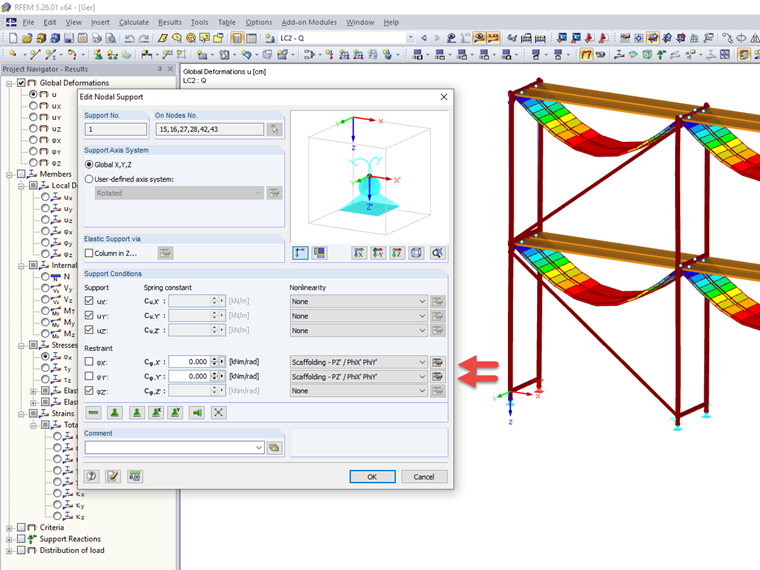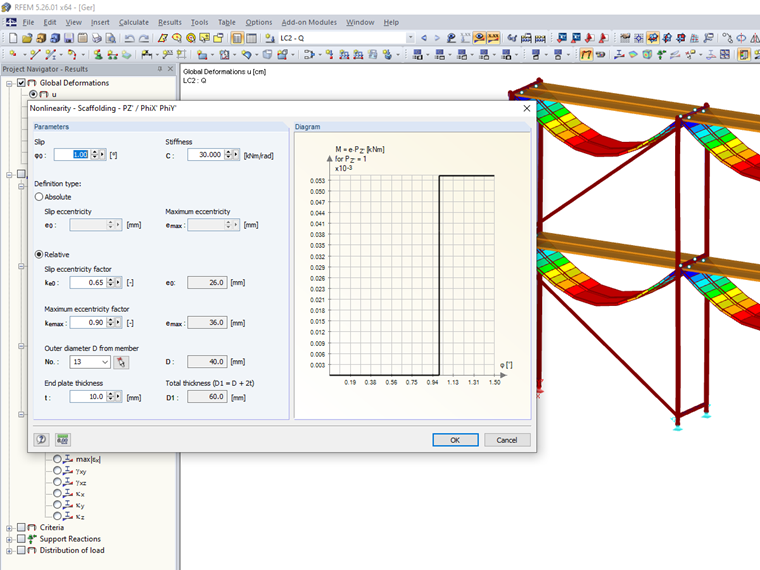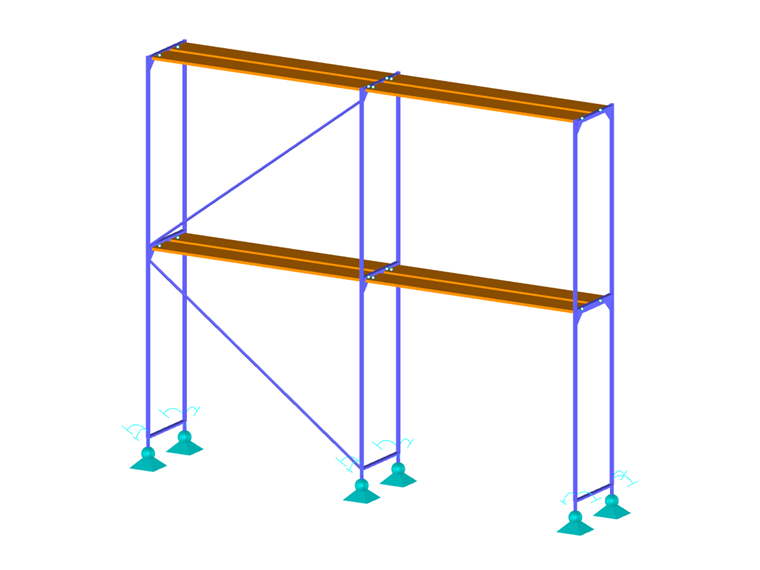Stable standing for these structures is usually achieved by a plate-shaped support situation. The plate helps to distribute the loading over the surface and to create, via its extension, a stabilizing lever arm for absorbing any support moment. Taking into account the equilibrium, this type of support, compared to a pure hinged situation, can additionally transfer a bending moment dependent on the vertical load. Seen from a purely technological point of view, a support plate in this situation reacts initially like a hinged support. However, with increasing rotation of the support member, there is a certain moment resistance. This special relation is described in the following standards, depending on the structure type:
- EN 12811-1: Temporary works equipment - Part 1: Scaffolds - Performance requirements and general design
- EN 1065: Adjustable telescopic steel props - Product specifications, design, and assessment by calculation and tests
RFEM provides the "Scaffolding" nonlinearity option for the degrees of freedom of the nodal supports φX' and φY', as required by the standards.
After activating the options in the nodal support dialog box, an Mφ work diagram for the affected support points, depending on the parameters,
- φ0 = slip
- C = rotational spring stiffness
- e0 = slip eccentricity (depending on ke0 and D)
- emax = limit eccentricity (depending on kemax and D)
- ke0 = slip eccentricity factor
- kemax = maximum eccentricity factor
- D = outer diameter of member
- PZ' = support force in Z' direction
can be created.
The support remains moment-free until the rotation angle φ0 is reached. Then, the rotation does not change until the moment Me0 = ke0 ⋅ D ⋅ PZ' is reached. Between the moment Me0 and the moment Memax = kemax ⋅ D ⋅ PZ', the support reacts with a rotational spring stiffness C. After Memax is reached, the yielding starts.



